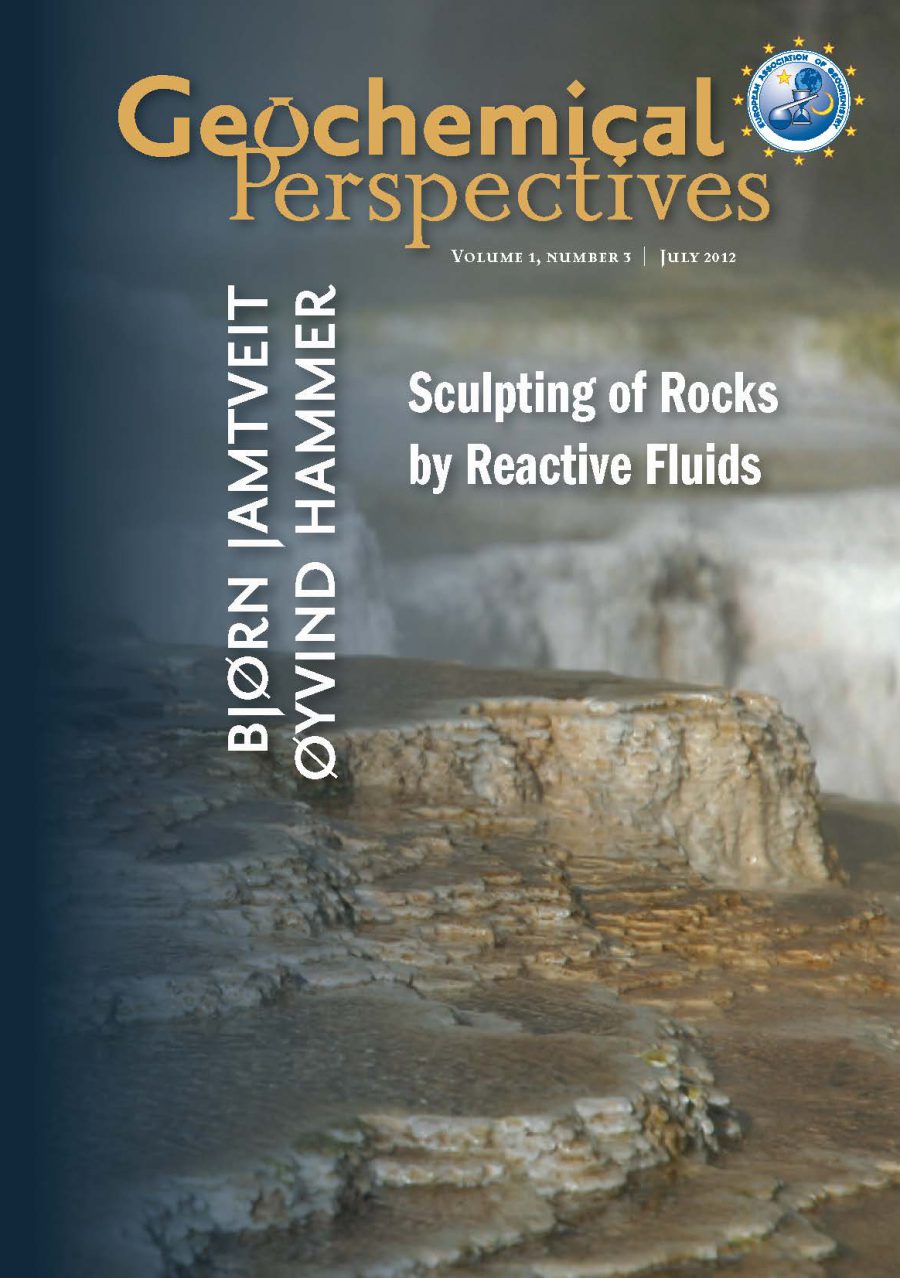
Sculpting of Rocks by Reactive Fluids
by Bjørn Jamtveit1 and Øyvind Hammer2doi: 10.7185/geochempersp.1.3 | Volume 1, Number 3 (pages 341-481)
Abstract
Interactions between rocks and reactive fluids produce a plethora of patterns, often visible to the naked eye, both at the Earth’s surface and at depth. Patterns arise from the coupling between chemical reactions, transport and sometimes, mechanical processes in systems where fluids and solids are at least initially sufficiently far from thermodynamic equilibrium for non-linear processes to operate. Surprisingly often, similar patterns are formed at different scales under very different conditions in systems with different chemical compositions. For example, many of the patterns formed by growth and dissolution processes mediated by reactive fluids at or near the Earth’s surface can also be seen in ice. This independence of details, or universality, has inspired us to organise this issue in a way that might appear to be unusual in a geochemistry context, by emphasising the similarities and differences in shapes rather than compositions.
After introducing the principles of pattern formation and reviewing the reaction path approach to reactive transport modelling, which requires a full and explicit account of homogeneous and heterogeneous chemical reactions, we begin a pattern focused discourse with a discussion of simple, surface normal growth. From the spheroidal shapes that result from surface normal growth, we continue toward the branched and dendritic patterns arising from growth in a diffusive field. Then, the symmetry breaking effects of fluid flow, demonstrated by growth and dissolution processes on free surfaces, are introduced.
The effects of confinement in subsurface environments add another level of complexity because growth is often tightly coupled to dissolution under these conditions and volume changing reactions generate local stresses. Consequently, reactive transport in porous and/or fractured rocks is, in general, coupled with mechanical processes. To avoid the additional challenges of time dependent deformation processes such as creep, only elastic deformation and fracturing are discussed, with a focus on fracturing because many of the most spectacular patterns observed in reactive fluid-rock systems are strongly influenced by fracturing. Deformation that is slowly driven by stresses that are continuously generated by heterogeneous reactions between rocks and fluids often leads to hierarchical fracturing, which divides rock or mineral volumes into successively smaller pieces by smaller and smaller fractures. Hierarchical fracturing occurs during both serpentinisation and spheroidal weathering and it provides first order controls on the evolution of reactive surfaces area and thus overall reaction rates. Then, we explicitly describe how stresses are generated by growth in pores and again point to the lessons that can be learnt by comparing fluid rock systems to the chemically simpler situation represented by the growth of ice in soils or rocks and the similarities between them. The potential implications of reaction driven fracturing for in situ carbon sequestration are also emphasised.
Finally, we discuss the significance of the scaling behaviour of patterns and, in particular, the connections between patterns and processes.

